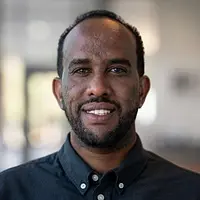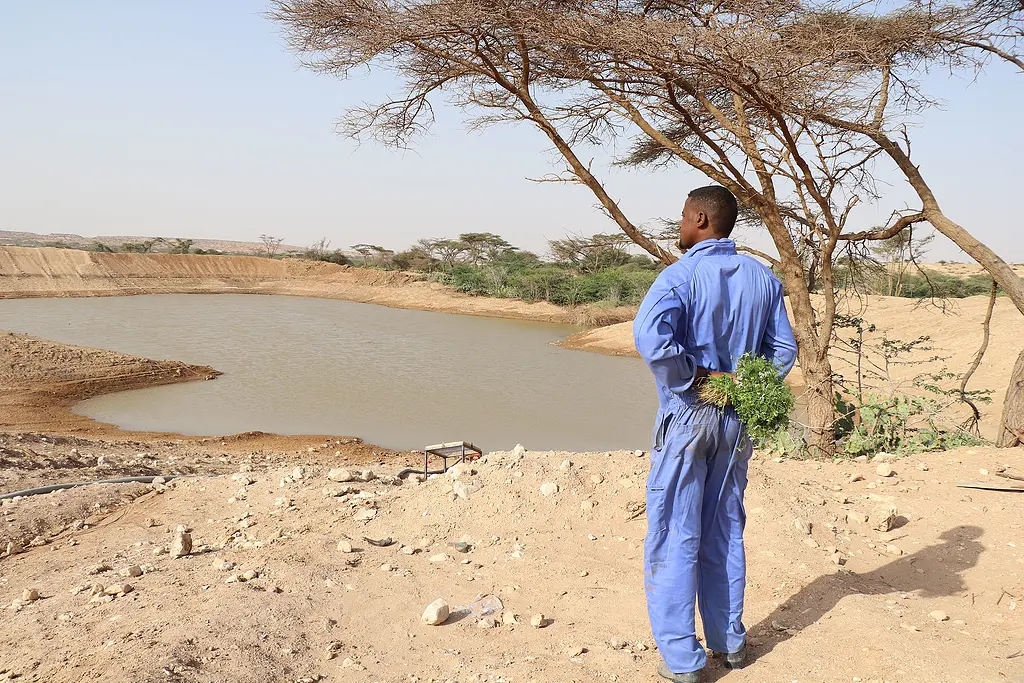Photo credit: USAID Somalia GEEL Project
The Horn of Africa is no stranger to adversity, but this past year has been particularly tough. Capping off a decade-long drought, Somalia also experienced the protracted COVID-19 pandemic, flash floods, and swarms of desert locusts that decimated crops. All this came on the heels of decades of civil war. Similarly, in neighboring Ethiopia, prolonged periods of drought—exacerbated by disease outbreaks—have led to large-scale loss of livelihood assets and displacement in recent years.
And yet, my last six years working in Somalia implementing the USAID Growth, Enterprise, Employment and Livelihoods (GEEL) project, and earlier experience helping manage market systems resilience projects in Ethiopia, have shown me that despite a backdrop of continued instability and the increasing impacts of climate change, countries in the Horn of Africa continue to find new strengths and opportunities.
How do they do it? And what do the shifting challenges in the Horn of Africa mean for these countries as they build resilience to the shocks that threaten to upend systems that have already withstood so much?
The economic impact of Somalia’s vulnerability to environmental shocks
Somalia is ranked among the countries most vulnerable to climate change. That’s a scary fact considering that about three-fifths of Somalia’s economy is based on agriculture, specifically livestock.
In 2017, drought led to the loss of 60 percent of herds in some areas. The next year, drought conditions led to a 50 percent reduction in cereal production. In 2020, World Bank experts said the triple crisis of COVID-19, locust infestation, and floods caused the economy to contract by 1.5 percent, and that Somalia’s vulnerability to shocks such as climate-related disasters is jeopardizing the country’s recovery from fragility. The cumulative impacts of a climate change, instability, and poverty have already put nearly six million people in danger of severe food shortages.
If this level of need is already something humanitarian assistance simply can’t address, how will these sectors fare when faced with the increased impact of climate change?
We have to think bigger: We have to think of resilience as more than something to stave off hunger, destitution, and despair. We need to see resilience to climate change as a win-win outcome for businesses and communities to pursue together.
Here’s an example.
When I started working on USAID’s GEEL program, the concept was straightforward: support the private sector to build robust and inclusive economic growth opportunities to increase incomes, boost employment, drive progress, build resilience and long-term food security, and disincentivize violent extremism.
Our team sought to work not merely with but through the Somali private sector, collaborating to create economic self-reliance alongside partner businesses and entrepreneurs, including in the Bay and Bakool Region—one of the most drought-prone areas in Somalia.
In a unique and effective arrangement, GEEL tethered its co-investments to contributions by partner businesses to improve their business viability and improve the productivity and profitability of their businesses while providing much-needed services to poorer and vulnerable households and communities.
Businesses built water dams to irrigate fodder fields, installed solar panels to power irrigation systems, and facilitated farmer-business agreements like camel leases. We partnered with private sector agri-input sectors to introduce new and improved seeds with features including drought tolerance, early maturation, pest and disease tolerance, and high yields.
We also trained farmers on methods to improve food production. The net results were a 162.5 percent increase in sorghum yields, meaning higher incomes for farmers and enhanced food security.
Over time, the success of these partnerships was evident, with businesses leveraging over $33.5 million in private capital investments and creating more than 23,000 jobs.
While this is just a drop in the glass in the overall context of Somalia, it proved a key concept: Focusing on private sector-led market systems development confirmed that Somalia’s private sector has and must continue to play a key role in strengthening the resilience capacities of individual farmers and communities.
Hamarwayne market in Mogadishu, Somalia. Photo credit: Omar Faruk for USAID Somalia GEEL Project
Lessons on market systems resilience in Ethiopia
The evidence we gathered from GEEL’s unique market systems development approach led me to think about Ethiopia, also ranked in the top 10 percent of countries most vulnerable to climate change.
From 2016 to 2015, I worked in Ethiopia, first on a pastoralist livelihood program and then at the USAID Mission there, helping to manage the Feed the Future-funded pastoralist and livestock portfolio to increase household incomes and enhance resilience to climate change through market linkages.
As in Somalia, these efforts were life or death: Severe droughts in 2011/2012 and again in 2015 were the worst the country had experienced in many decades and were major shocks for families who depended on livestock and agriculture. Crop and animal losses were widespread, and in 2015, more than 8 million Ethiopians needed emergency food aid.
The USAID-funded Pastoralists Livelihood Initiative and Pastoralists Areas Resilience Improvement through Market Expansion (PRIME) helped herders respond to the shock created by the drought by introducing commercial destocking, among other strategies. Pastoralists who might otherwise have killed off animals they could no longer afford to feed were instead connected to livestock traders who would pay a fair price for these assets, allowing pastoralists to protect other herds of livestock and to buy food and household necessities.
Other proven market systems approaches to building resilient livelihoods in Ethiopia included commercial fodder production and veterinary services to sustain dairy cows and camel herds during droughts.
Before these programs began, the role of the private sector and market systems in building resilience was a new concept still being explored. However, these initiatives and USAID’s Horn of Africa Resilience Strategy provided two key lessons:
- First, humanitarian assistance is helpful but insufficient to help households recover from shocks, especially as the impacts of climate change increase. Short-term humanitarian assistance must be integrated with long-term economic development to help communities and households withstand shocks and be more resilient in the long term.
- Second, a systems approach that includes the private sector is necessary for Horn of Africa countries to realize long-term food security and resilient, dependable agri-food systems from farm to market to table.
Looking ahead to a more resilient future
My experiences in Somalia and Ethiopia have proven that donor money is not the only answer to these multifaceted problems—and there is plenty of precedent and international support for other approaches. The global development community must focus more on scaling up local solutions that have proven effective, such as those we saw working in the GEEL program.
The private sector’s key role in building resilient communities is indicated in the Sustainable Development Goals, the Paris Climate Agreement, and the Addis Ababa Action Agenda. Fortunately, as I saw first-hand, businesses stand at the ready to create mutually beneficial deals and partnerships that will make market systems and households more resilient to climate change and any other multitude of shocks that may come their way.


